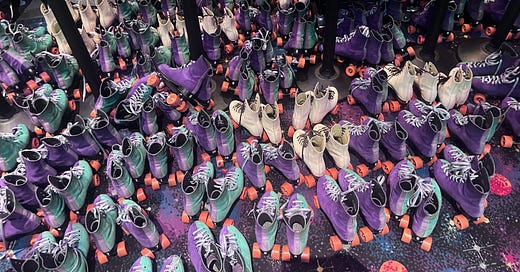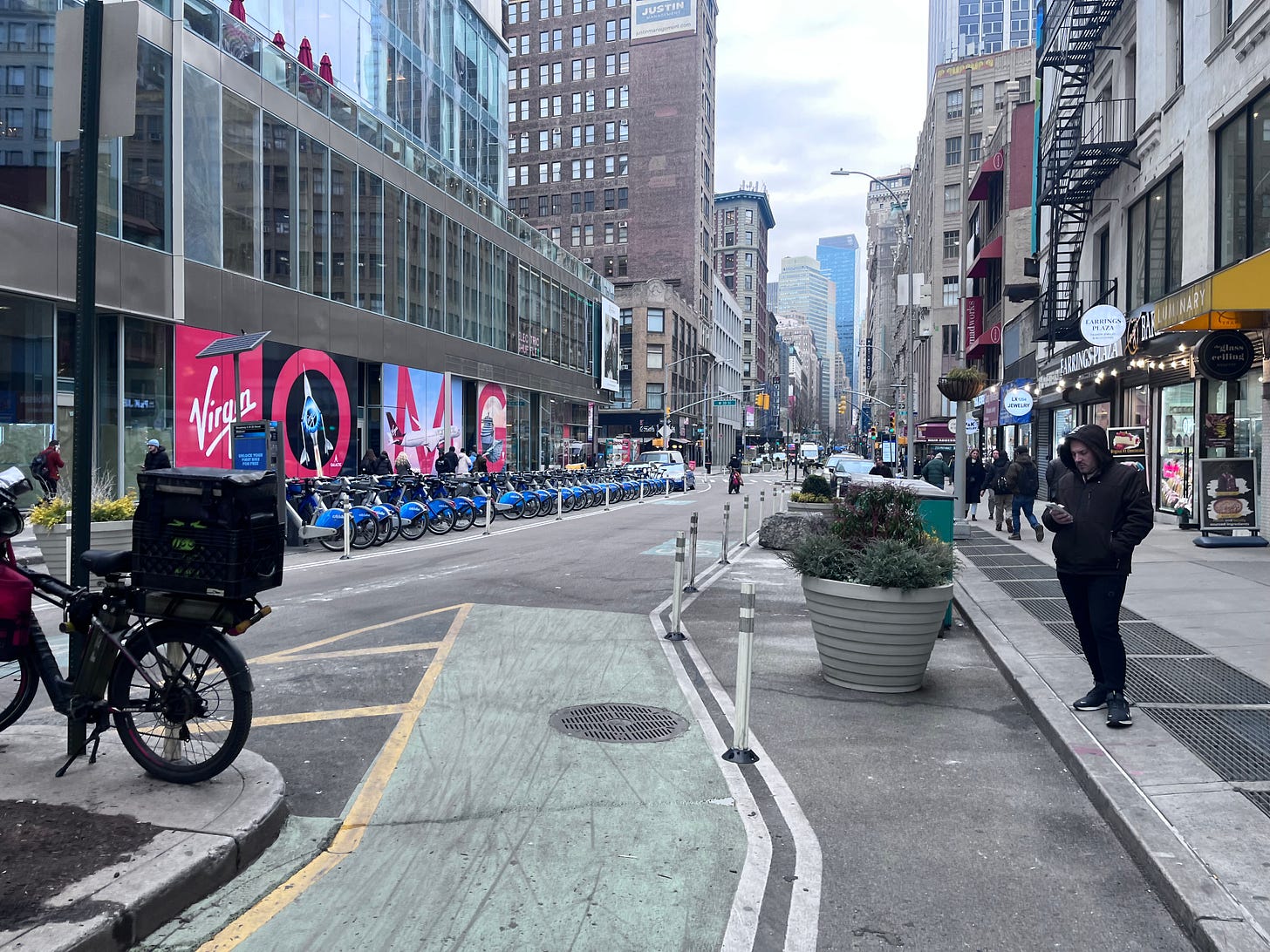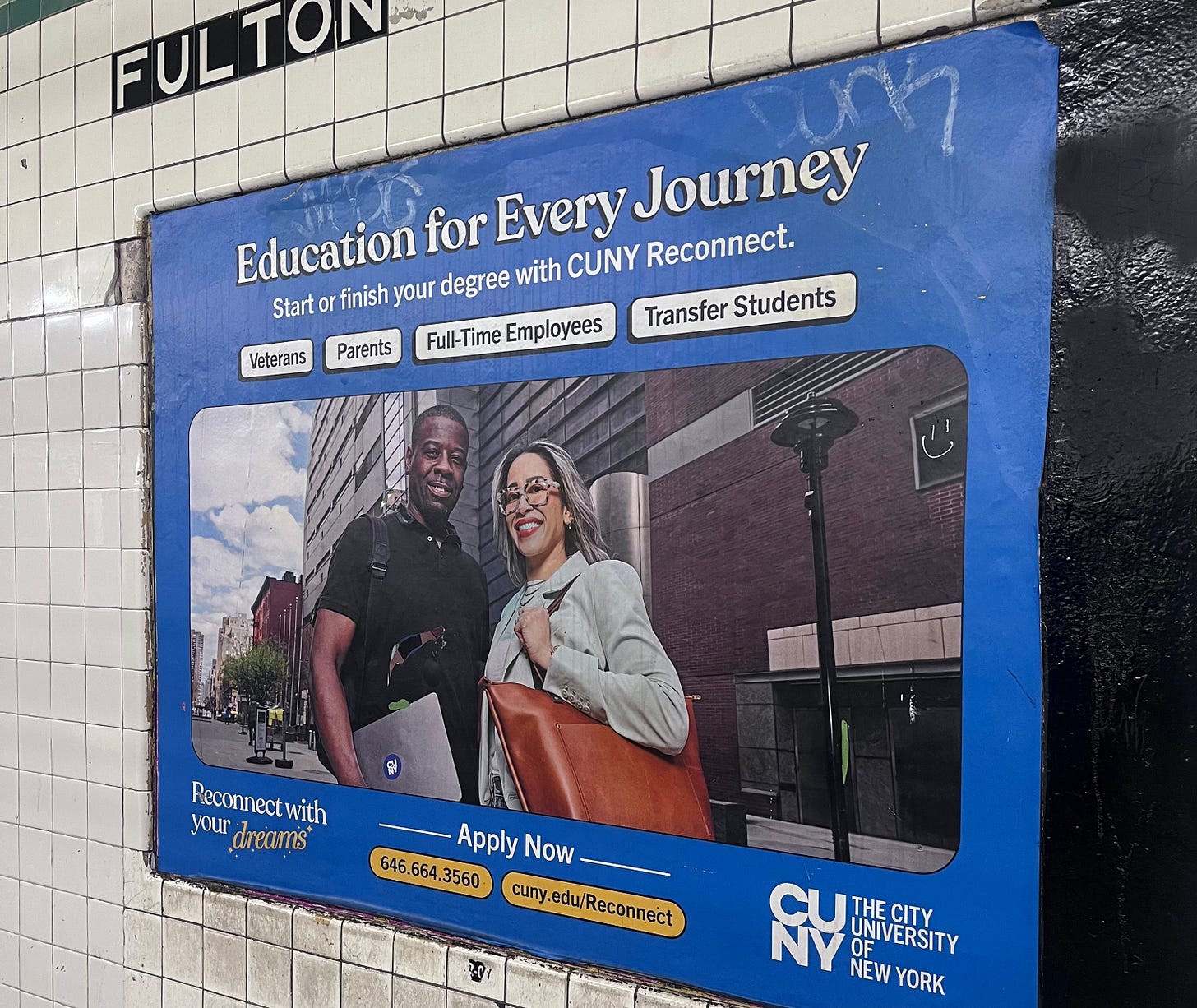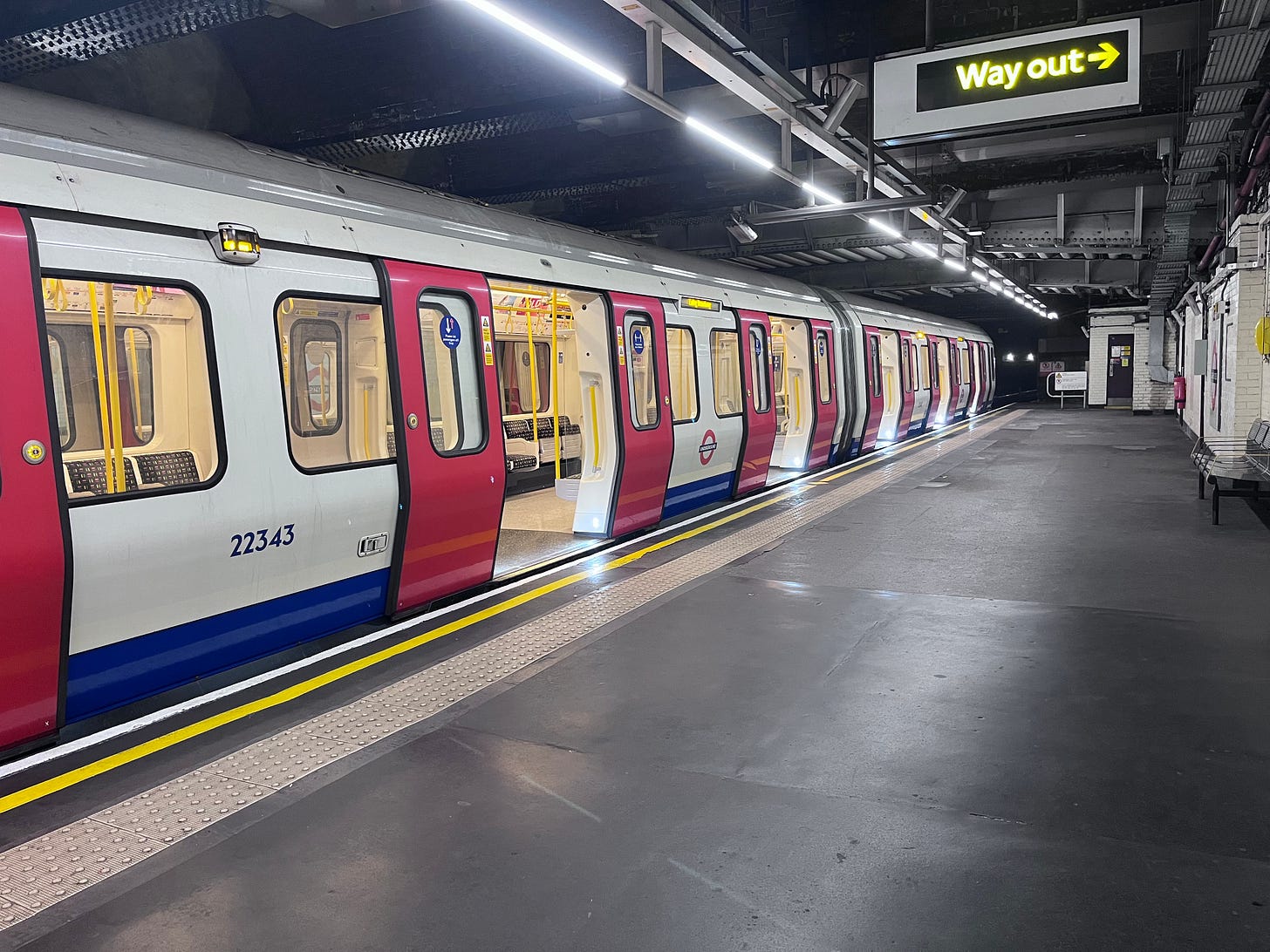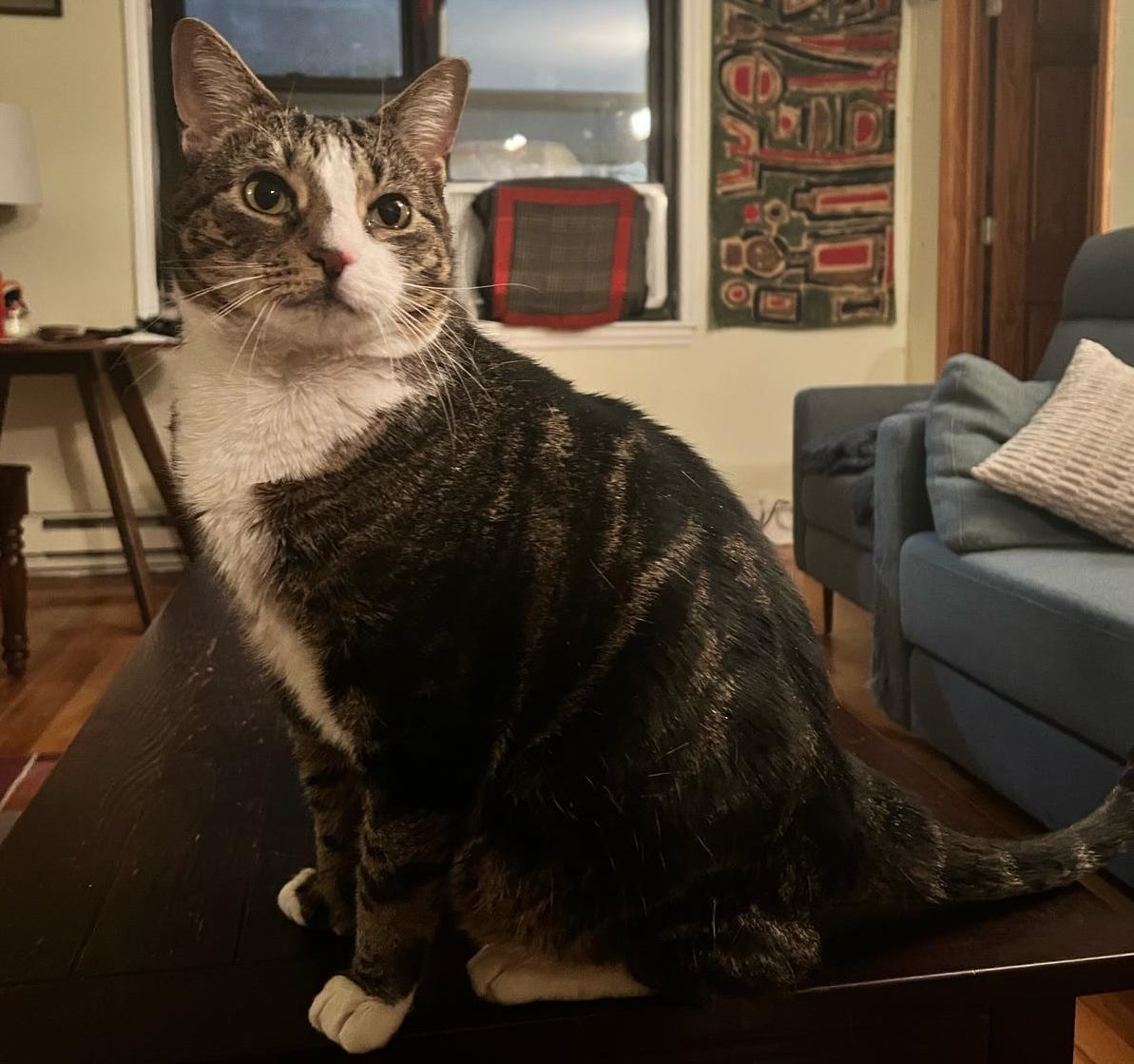Bonswa*
And welcome to this newsletter.
It's where I (John Surico) talk each month about cities & their discontents: streets, climate, cultures, people, food, form, etc. This month, we cover:
- Congestion pricing, at long last;
- BOLLARDS;
- The high cost of free parking™;
& much, much more.
Highly trafficked
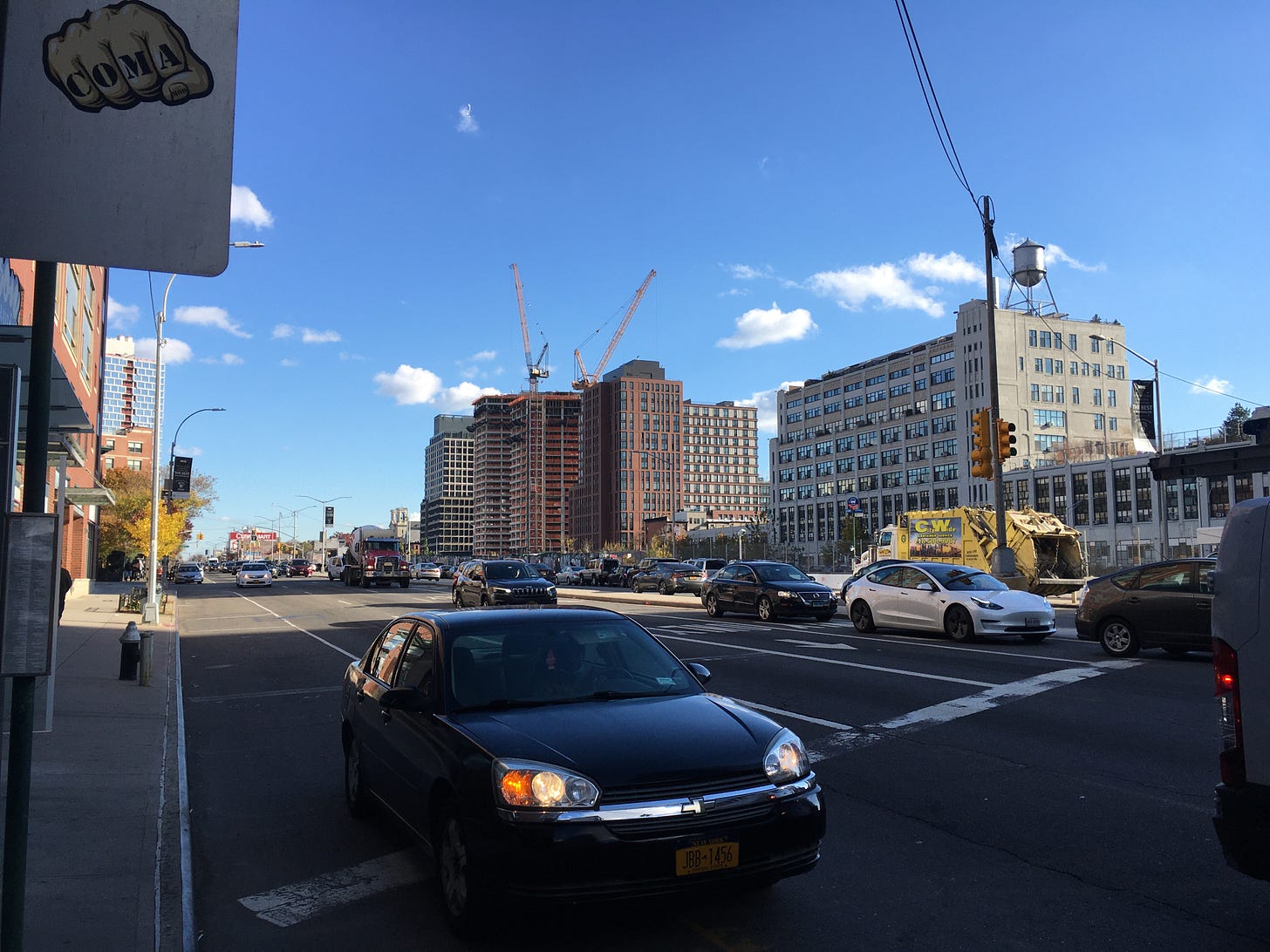
In the late 1970s, Donald Appleyard noticed something about his neighbors: they weren’t talking to each other as much anymore. The English-American urban designer, who taught at UC Berkeley, was picking up on what is, in my opinion, the social phenomenon of our time—the loneliness crisis. Never at any other period in human history have people been this socially disconnected: we’re not joining as many clubs and community groups; we’re increasingly living alone; and our social networks are steadily declining. Derek Thompson of The Atlantic recently labeled this era as “the anti-social century.” And the list of potential reasons why is lengthy: the doom-scroll of technology; the degrade of the post-war safety net; the numbness of late-stage capitalism (ofc); and the growing fracture in our belief of civic society. It’s a lot to take in.
But Appleyard looked locally for explanation. In 1981, for his seminal text Livable Streets, he spoke to residents living on three separate stretches in San Francisco: one with 2,000 vehicles a day; one with 8,000; and one with 16,000. And what he found was fascinating: the residents living on the low-traffic street had twice as many acquaintances as those living on the high-traffic street. Neighbors on the former were on a first-name basis; neighbors on the latter hardly spent time there. In a truly cruel twist of fate, Appleyard was hit and killed by a car in Athens, Greece the next year, but his work has influenced generations of urban thinkers, with a simple yet striking premise: traffic has a socially perverse effect on us, and our lives would be healthier and happier if we had less of it.
I think of Appleyard often when people ask me for my opinion about the first-in-the-nation start of congestion pricing in New York. (The cameras flicked on January 5th.) Sure, it’s a toll, but—and I’ve made this point here before—what makes congestion pricing, or this idea that drivers should pay to enter a city’s central business zone, equal parts profound and provocative, especially in America, is that it labels our society’s acceptance of traffic as a bad thing. It says the quiet part out loud: that traffic is choking us—literally, and figuratively. And it demands us to imagine what our world could be like if we had less of it.
In an otherwise dim time, that alternate reality appears promising. Traffic and crashes are down. Bus speeds, pedestrian counts, and even Broadway ticket sales are up. So is transit ridership and revenue. Yet I’m more interested in what would’ve stuck out to Appleyard if he were still alive today: the number of kids now playing in the street; the number of neighbors more encouraged to sit on their stoop or at an outdoor café and chat; what people can hear now that they otherwise couldn’t before; and what, socially, a Manhattan with a whole lot less cars can be for people—meeting, crossing, walking, and talking. It’s too early to say, but initial signs are positive. (Warmer weather will help, too.)
I’ve been talking about congestion pricing—and all the other policies attached to it—for almost a decade now. The title of a historical piece I did for Vital City last year was “The Long and Winding Road,” which now, it seems, is never ending. The president wants it dead. The governor wants to keep it. And the mayor wants nothing to do with it. Like so much of America right now, its longevity feels fragile, even if the legality of its dismantling is shaky at best. To know exactly what comes next is impossible. But each day the cameras stay on, people are seeing the social dividend from traffic-lite streets.
Bollardian
For much of the modern age, our public realm has grown increasingly securitized. We continue to equip our parks, plazas, and squares with stuff that is both low-tech (i.e. columns, boulders, gates) and high-tech (i.e. cameras, sensors, facial recognition). This effort took on new zeal after the attacks on September 11th, 2001—which introduced measures that are still in place 24 years later—but it’s been underway for decades. The advent of the automobile in the 20th century demanded protection for people standing inches away from fast-moving traffic, and as the perils of mass death, be it from terrorism or reckless driving, become starker, more attention has been paid to walling us off from danger.
But how do we defend against those very real threats and still create places that people actually want to be in? Over-securitized is no fun, but under-securitized may be fatal. In the wake of the New Year’s Eve attack on Bourbon Street in New Orleans, which is now the worst car-ramming event in U.S. history, I was asked by Bloomberg CityLab to find the best solutions out there for both the hardware and software needed to keep our public spaces safe yet lively. Check it out here.
And on a related note: it is life symmetry that, around this time, I was also working on a how-to guide for Streetsblog NYC related to a recent obsession of mine: fixing New York City’s countless flexposts. These little white rods of plastic and rubber are popping up everywhere—along bike lanes, outdoor dining structures, curb extensions, and more. And while they’re not a best practice by any means (spoiler alert: they break), bollards are a fixture of today’s streetscape that demand our attention. Here’s how you can help.
Reconnect 2.0
Apologies in advance, but I will take any opportunity to yap about CUNY Reconnect because its success is an endless fountain of joy for me. Bite-sized recap: wrote a policy brief at Center for an Urban Future in 2022 -> inspired an initiative from New York City Council —> re-enrolled over 40,000 adult learners in college since. (Fuller picture for those interested here.) We love to see it.
But now, in a twist we didn’t see coming, the program has become a crucial piece of the system’s success. Because like many higher education institutions, the City University of New York (CUNY) saw its enrollment plummet during the pandemic. College was a tough place to be then, to say the absolute least, and universities lost a lot of their allure when the world shut down. Like other trends, student attendance has trickled back, but now, a post-pandemic world where everything feels slightly less but still upside down, colleges face an existential question: what is their worth? And for (likely) too long, higher education sat back and benefitted from a societal mantra of college = good. With that message understandably eroded, colleges will have to be proactive, rather than reactive, in attracting future learners by lowering the barriers to access.
Enter a program like CUNY Reconnect, which targets the nearly 700,000 New Yorkers with some college credits but no degree and adjusts services to fit their needs. Now, in its latest master plan to double-down on recent enrollment gains, CUNY is fine-tuning that outreach even further. Here’s what they said:
Each year, about 30% of CUNY undergraduates withdraw from our educational programs for a variety of reasons… CUNY Reconnect will initially target three growing adult populations: individuals impacted by the criminal justice system (including their family members), students educated outside the United States and veterans.
This approach goes far beyond what we initially imagined for the program, with way more thought given to the specific demographics driving this phenomenon. And it’s not only a marked sign that it’s here to stay, but also, a blueprint of what colleges can be doing to right some past wrongs and figure out a path forward.
OSA: Parking politics
“Nothing is more political than parking.” It dooms projects. It divides communities. It causes fights. It kills. And it fosters this deeply ingrained worldview that there needs to be lots of it exactly where I need to be.
That’s one of my favorite quotes from Donald Shoup, the UCLA professor that inspired a generation (Shoupistas) to think long and hard about the high costs of free parking—the name of his planning tome. This month, he passed away at the fine age of 86. Obituaries were widespread and poignant. Especially because it seems as if his life’s work is finally paying off: cities everywhere are repealing mandatory parking minimums, passing over driver complaints of lost spots to install street safety measures, and reconsidering the acreage upon acreage of space we dedicate to curbside private storage. (A few letters ago, I mentioned Henry Grabar’s great book, Paved Paradise, which captures so much of this.)
I had the chance to chat with the man whose students called Shoup Dogg—these nicknames are just amazing—on several occasions. One time, he emailed me saying how much he enjoyed a story I did for Bloomberg CityLab in 2019 about innovative revenue streams for New York City mass transit, which included congestion pricing then, but that it omitted a key idea: charging market-rate prices for parking. (Of course.) I spoke to him again during the pandemic, when rethinking parking spots was all the rage. He was always happy to talk, and from what I’ve been told, that continued until the day he died.
But I think of Shoup often on the Open Street, when even five years into this markedly successful experiment, we’re still combatting a narrative that the loss of 20 to 30 parking spots along two blocks for eight hours on two weekend days for eight months of the year is destroying the neighborhood. That the availability of parking matters more than the availability of public space. And that we shouldn’t change anything about our streets, even if they’re flawed in so many ways, because some drivers will have to spend a bit more time circling the block.
What Shoup managed to do particularly well is demonstrate how those narratives solidify into worldviews, and how collaborative approaches can benefit everyone (even drivers). One of my favorite ideas of his is a parking benefits district, where neighbors would decide together how to spend meter money on local beautification projects. He took something super sensitive to folks, then wouldn’t shut up about it, and in turn, developed inclusive solutions to get people to think bigger. And he’ll be sorely missed for that.
Bright Side: Recharge
In 2018, after a brutal late-summer heat wave, I set out to learn why subway stations underground were so damn hot.
To my surprise, it wasn’t what I believed to be the obvious culprits: the density of people crammed together on platforms; or the rising temperatures from climate change baking the planet outside. Instead, it’s actually the train itself: its engine, its electrical and auxiliary systems, its actual movement, and—overwhelmingly—its brakes. Or, in short: physics; get a gigantic steel tube to stop short at high speeds in front of throngs of people indoors and you’re probably gonna sweat. (It also doesn’t help that the circulation underground is typically shit.) I wrote a piece then forVICE about what transit agencies were doing about it, and years later, it’s neat to see another smart solution come to the fore.
In Spain, the public transit operator TMB (the Transports Metropolitans de Barcelona) has installed what’s known as ‘MetroCharge’ at 16 stations. It’s a regenerative braking device that uses an electric motor to siphon that energy coming off of trains entering elsewhere—to electric vehicles, to other trains, or even the stations themselves. Over the summer, I highlighted something similar in Paris—where turnstiles were being harnessed for power—but Barcelona leveled up. Because heat has power: to date, TMB said it’s saving 7.3 million euros worth of energy costs, and fully powering 28 Metro stations. 🥵
On the Radar
Homes for Living: The Fight for Social Housing and a New American Commons By Jonathon Tarleton
In headlines, the housing crisis that consumes us—where the roofs over our heads are gobbling up bigger and bigger portions of our paychecks—often boils down to the question: Can we build more? But it’s not just that; it’s also: Can we build affordably anymore? Because we all know that ‘affordable housing’ we keep hearing about is actually… not so affordable. Unlike the climate crisis, which hedges on an effort to deploy new innovative solutions at a speed or scale never before seen in human history, the housing crisis is about our societal chutzpah to do what we used to do—build deeply affordable homes en masse—in places where people want to live. Whether that can happen in today’s distorted market, which often feels like one big mirage, is where things get fuzzy.
In other words: unlike the climate crisis, there actually is a playbook here. And one of those pages would likely be written with the words “Mitchell Lama.” It’s a housing guarantee program from the 1950s that resulted in a shit ton of units for moderate-income families across New York State by luring developers with tax breaks and guaranteed returns. That property is then placed in the hands of residents through limited equity co-ops, which neighbors manage together thereafter. Mitchell Lama is widely cited amongst experts as one of the most ambitious housing programs of its kind—and a potential salvo to today’s challenges, which aren’t too dissimilar to then.
Jonathan Tarleton, an old editor of mine at Urban Omnibus, became infatuated with Mitchell Lama as a particularly prevalent social housing solution that could help dig us out of this remarkable mess we’ve made. But what’s intrigued him more is what’s happened since: a legal loophole in the program where residents can vote to “opt out” of the program and enter the private market, once the building’s mortgage is paid off. It pits neighbors against one another in a dog-eat-dog situation that, Tarleton tells me, “nobody should have to ever be in.” This is the core of his new book, which follows the privatization sagas of two Mitchell Lama developments in order to figure out what this all means for our crisis today.
And we chatted all about it, for a new Q&A in New York Magazine’s Curbed.
Streetbeat Gig Board
The world is burning, but there are a ton of jobs to cover the flames. (Varied)
If you really love cycling, then People for Bikes, an industry and advocacy group for the pedaling world, is hiring an infrastructure program manager. (Remote, but Los Angeles/SoCal preferred)
These climate groups need a consultant, via NRG. (Remote)
Join the Natural Areas Conservancy, an advocacy group for New York City’s wetlands, forests and so much more, as a community research and partnerships manager. (New York, NY)
***
